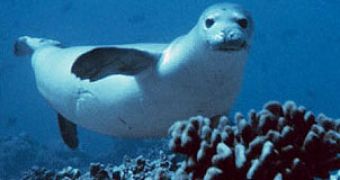Only yesterday, the Smithsonian (i.e. the world's largest museum and research complex) informed the general public that, thanks to a $10 million (€7.7 million) donation made by Suzanne and Michael Tennenbaum, coastal ecosystems were to fall under intense scientific scrutiny for many years to come.
More precisely, said money will allow the Tennenbaum Marine Observatories to engage in a long-term study of the effects both human activities and human-driven phenomena such as climate change and global warming have on marine biodiversity.
According to Newswise, the research activities that are to be carried out by scientists working with the Smithsonian will focus on marine ecosystems worldwide.
Thus, the initial stage of the project will witness studies being carried out at only five field sites, but ten more research locations will be added as these scientific investigations progress.
Speaking on behalf of the Smithsonian, Secretary Wayne Clough made a case of how, “As our coasts undergo accelerating change due to human activity and the effects of climate change, it is more important than ever to monitor and understand the ocean’s biodiversity.”
Furthermore, “We are grateful to Michael and Suzanne for this donation, which allows the Smithsonian to focus its unique expertise and strength in long-term research.”
Apparently, said philanthropists agreed to give this much money to Smithsonian researchers because it is their first belief that they are the most qualified to perform the task of bringing forth a large-scale investigation into how marine environments are affected by the development of various industries and the effects of climate change and global warming.
“I believe that the Smithsonian has the best chance to do this job. It’s one of the largest research organizations in the world and already does similar research,” Michael Tennenbaum said.
According to the same source, the scientists who will take part in this project are to focus on recording the make-up of marine environments at regular time intervals, as this will allow them to come up with comparative data bases and thus pin down the precise changes these natural habitats are going through.

 14 DAY TRIAL //
14 DAY TRIAL //